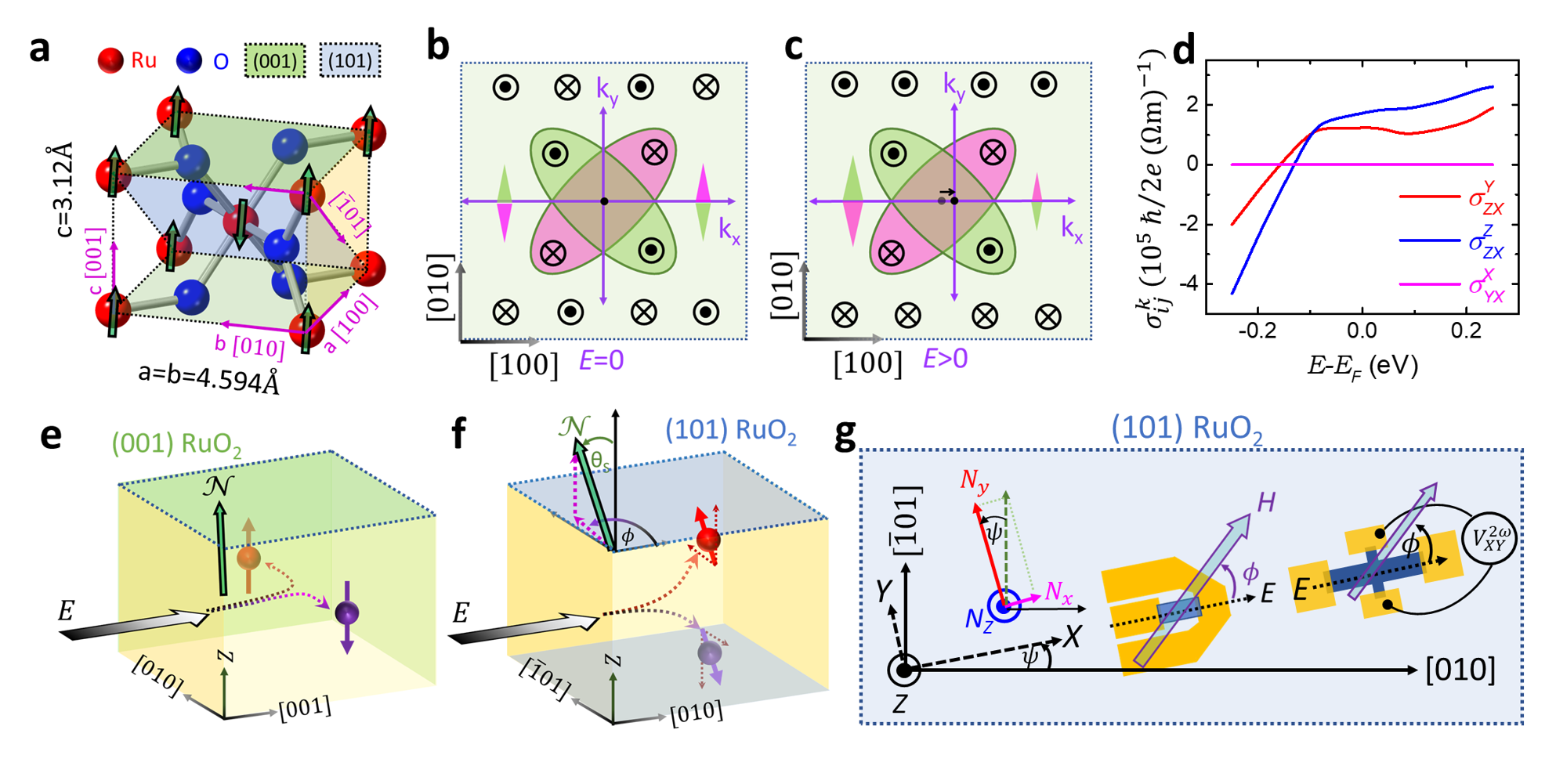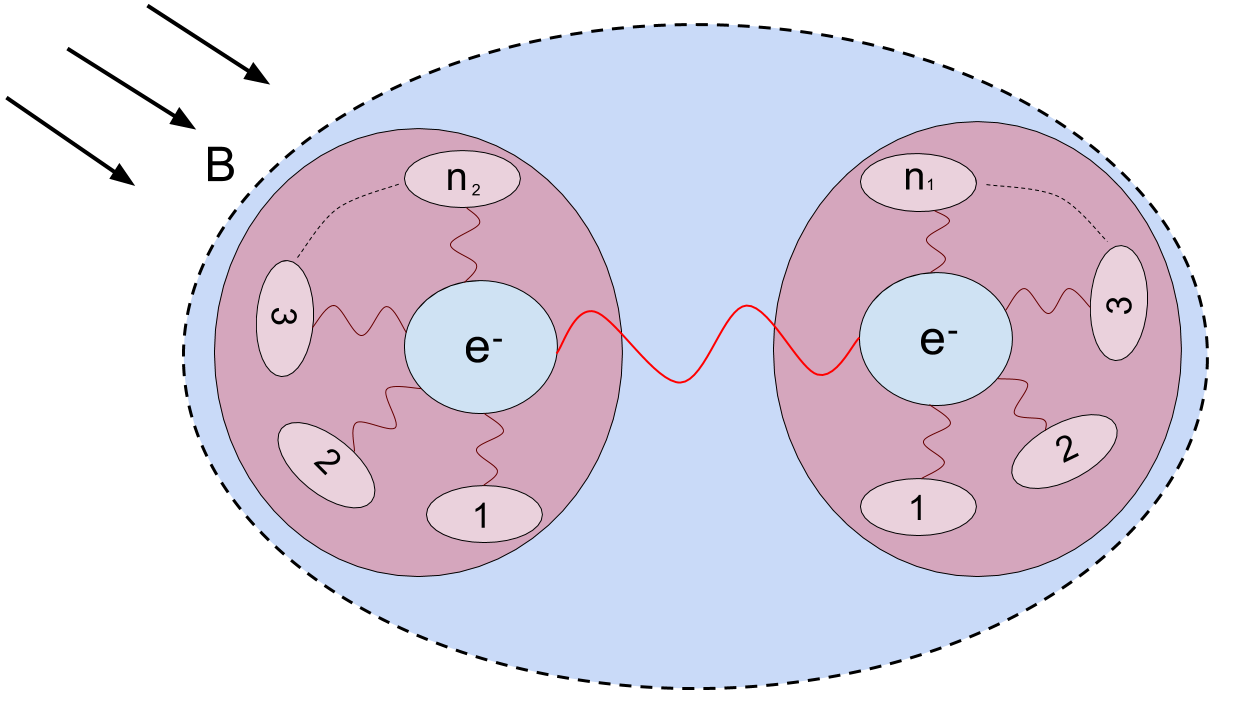Tilted spin current generated by collinear antiferromagnet RuO2
We report measurements demonstrating that when the Neel vector of the collinear antiferromagnet RuO2 is appropriately canted relative to the sample plane, the antiferromagnet generates a substantial out of plane damping-like torque. The measurements are in good accord with predictions that when an electric field, E is applied to the spin split band structure of RuO2 it can cause a strong transverse spin current even in the absence of spin-orbit coupling. This produces characteristic changes in all three components of the E induced torque vector as a function of the angle of E relative to the crystal axes, corresponding to a spin current with a well defined tilted spin orientation s approximately (but not exactly) parallel to the Neel vector, flowing perpendicular to both E and S. This angular dependence is the signature of an antiferromagnetic spin Hall effect with symmetries that are distinct from other mechanisms of spin-current generation reported in antiferromagnetic or ferromagnetic materials.
- Arnab Bose*, Nathaniel J. Schreiber*, Rakshit Jain*, Ding-Fu Shao, Hari P. Nair, Jiaxin Sun, Xiyue S. Zhang, David A. Muller, Evgeny Y. Tsymbal, Darrell G. Schlom, Daniel C. Ralph; arXiv:2108.09150 (submitted) * denotes equal contribution

Spin Orbit Torques generated by Dirac Nodal line IrO2
We report spin-torque ferromagnetic resonance studies of the efficiency of the damping-like spin–orbit torque exerted on an adjacent ferromagnet film by current flowing in epitaxial (001) and (110) IrO2 thin films. First report on spin torque generated by dirac nodal line IrO2.
- Arnab Bose, Jocienne N. Nelson, Xiyue S. Zhang, Priyamvada Jadaun, Rakshit Jain, Darrell. G. Schlom, Daniel. C. Ralph, David. A. Muller, Kyle. M. Shen, and Robert. A. Buhrman; ACS AMI 2020, 12, 49, 55411–55416

Undergraduate Work : Radical pair model of magnetoreception
Coherence in the radical pair model of avian magnetoreception
The radical pair model is the most accepted hypothesis to explain the navigational capability of certain migratory birds. We are currently working on analysing coherence dynamics and sensitivites in a realistic model of magnetoreception. In our recent work, we developed techniques to calculate coherence dynamics in a realistic radical pair model. We showed that unlike a usual quantum sensor, avian compass works better in a certain regime where decoherence due to nuclear environment is significant.
- R Jain, VS Poonia, K Saha, D Saha, S Ganguly; Proceedings A Royal Society 2020.0778

